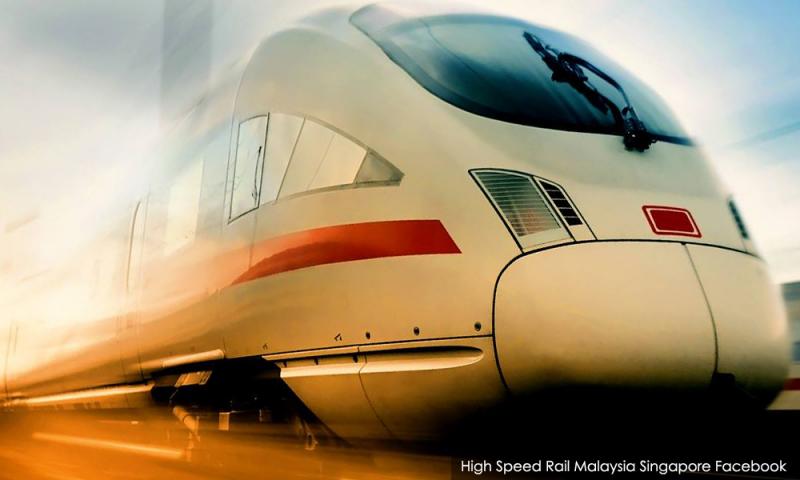LETTER | HSR project - can we avoid bankruptcy?
LETTER | A few months ago, I read two articles, “Large-scale infrastructure projects can further spur Malaysia’s economic development” and “HSR will give economy boost” in the New Straits Times.
The justification - generating spillover effects and employment opportunities and enhancing productivity to ensure that Malaysia maintained its global competitiveness.
It will provide Malaysian firms and talents access to a vast and untapped market (the China-Asean Economic Trade Zone, the Eastern Economic Corridor in Thailand and sub-regional economic zones).
The high-speed rail (HSR) will also unlock the untapped potential in the Southern Corridor and great economic opportunities along the HSR.
I have written a few articles on HSR and the last one was “HSR project - did we change the goal post?” published by the Malay Mail on April 25, 2024.
In 2018, the then prime minister Dr Mahathir Mohamad scrapped the project estimated at RM110 billion, saying the decision was to “avoid being declared bankrupt”. Compensation was paid to Singapore in 2021.
It resurfaced in 2023. Current Prime Minister Anwar Ibrahim said the government would proceed if it could substantially lower the cost.
In January 2024, Transport Minister Anthony Loke said the project is still on track despite Japanese companies opting out at the request for information (RFI) stage over concerns about the lack of financial support from the government. Anwar said the government would look into why the firms pulled out.
In March, he asked the transport minister to pursue the matter and mentioned that we are open to any proposals, provided that they are private investments and “minimise financial implications” for the government.
MyHSR Corp, responsible for the development and implementation of the project, had submitted to the minister a preliminary report.
The justifications above are all subjective and not even qualitative, much less quantitative.
How would the HSR from Kuala Lumpur to Singapore access the vast and untapped market in the China-Asean Economic Trade Zone and the Eastern Economic Corridor in Thailand?
Large-scale projects entail risks of aggravating socio-spatial exclusion at the time of the pre-construction (land acquisition and displacement of population) and the created infrastructure (environmental justice and destabilisation).
There will also be urban fragmentation, displacing inner-city residents who are largely minorities and reduced neighbourhood employment opportunities.
The claim that growth creates employment is a “key ideological prop” as a higher cost of living will disadvantage them since skilled employment will be promoted thereby, penalising relatively less educated groups.
I guess the consequences of spatial fragmentation have not been properly documented (displacement of livelihoods and population and how do local populations cope when completed).
How about the liabilities with regard to poorer current residents - higher costs and affect the environment (air pollution, traffic)?
The “regressive distributional effects” tend to create some material deprivation among the local populace, which is incompatible with political equality.
The fact is, gentrification is not an unintended consequence of large-scale projects but is a key component for revitalisation.
In April, according to market insiders, the cost has drastically been reduced to about RM70 billion - an over 40 percent decrease due to reduced length and re-alignment as well as the number of trains and stations.
This is even lower than the initial estimation of RM72 billion in 2013. This is strange as HSR will be realigned to connect Forest City.
Now, eight months later, has anybody looked at why the Japanese firms pulled out?
There is the Japan Bank for International Cooperation (JBIC). It is government-owned and conducts lending, investment, and guarantee operations with preferential terms.
The standard terms are a 0.75 percent interest rate with a repayment period of 40 years (including a 10-year grace period).
Even with JBIC, Japanese firms have opted out, I am not too sure how the remaining interested parties can raise financing on very favourable terms.
Then, will there be a positive response from the Transport Ministry and cabinet when the evaluation is submitted, especially at the “reduced” cost?
In an interview in July with Bloomberg, Loke expressed hope that the cabinet would decide on the viability of the multi-billion-dollar project by the end of the fourth quarter.
Once a decision is made, negotiations will start with Singapore. He cautioned that the government is not ruling out “assistance”.
We need confirmation from the Malaysian Institute of Economic Research when its economist opined that the government will not add a substantial burden to its current finances by taking on the project since it will not be funded by the government.
Last year, Singapore said it was willing to discuss any new proposal from Malaysia for the project in good faith, “starting from a clean slate”.
I was surprised when some said the project would be more feasible if the line extends up to China… that will cost a bomb. Further, our north-south double-tracking and East Coast Rail Link are not high-speed trains.
If the intention is to push up the country’s GDP, it is not sustainable for a project of this magnitude. We need to understand the difference between economic growth and sustainable economic development.
Lyrics from the song, “Last Train to London” by Electric Light Orchestra say:
“There you were on your own
Looking like you were the only one around
I had to be with you
Nothing else that I could do
I should have been away
But I knew I had to stay”.
What say you?
The views expressed here are those of the author/contributor and do not necessarily represent the views of Malaysiakini.
RM12.50 / month
- Unlimited access to award-winning journalism
- Comment and share your opinions on all our articles
- Gift interesting stories to your friends
- Tax deductable
